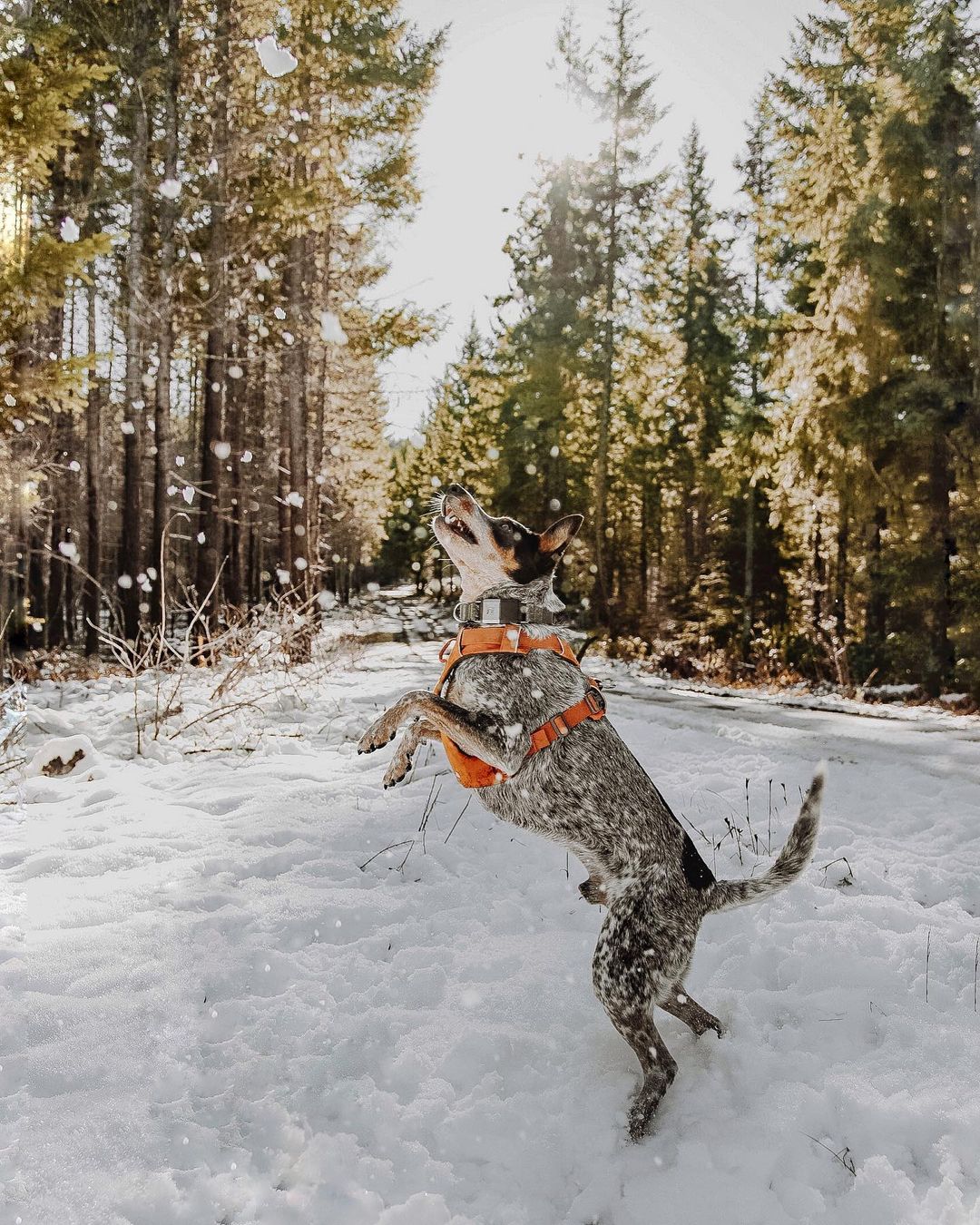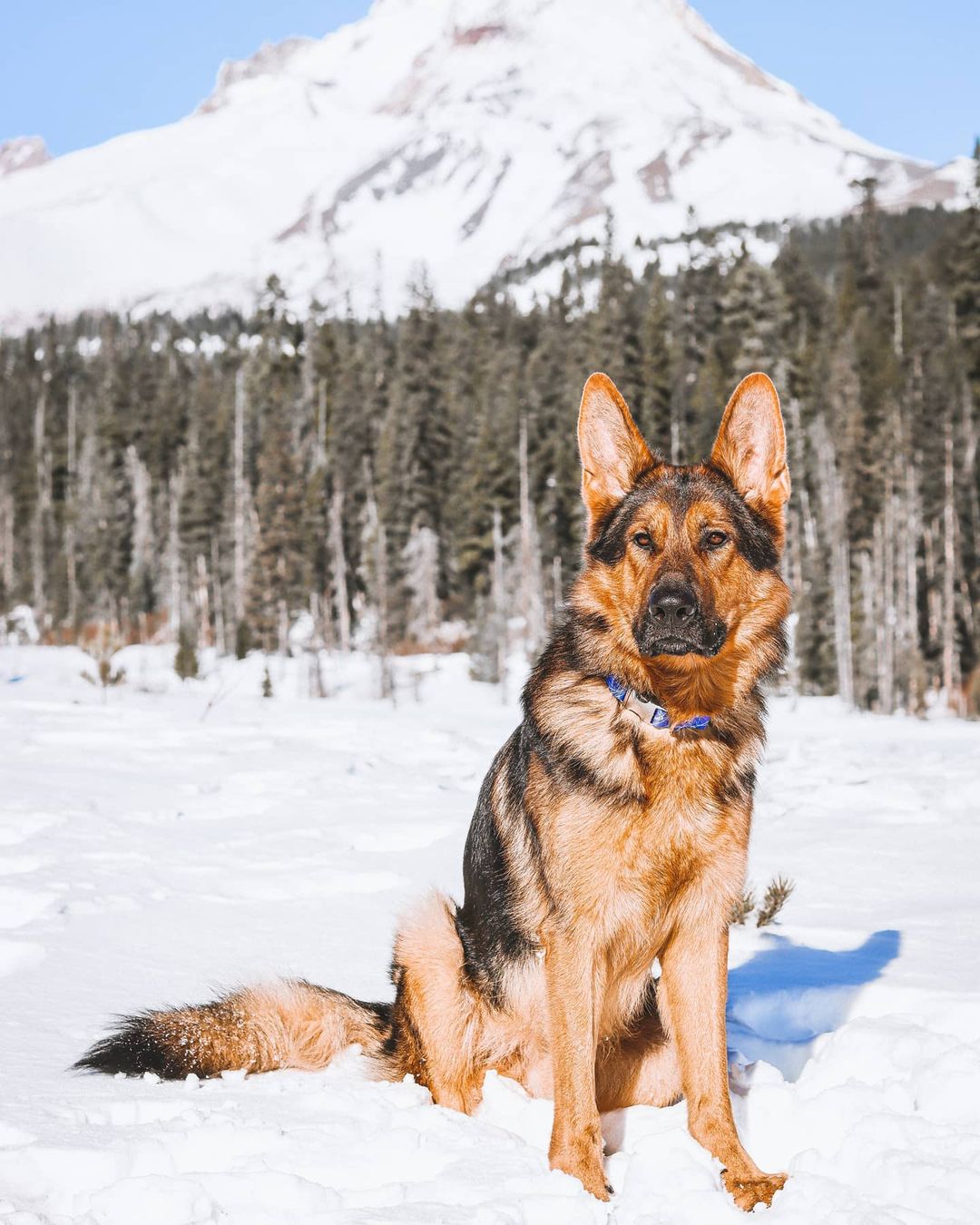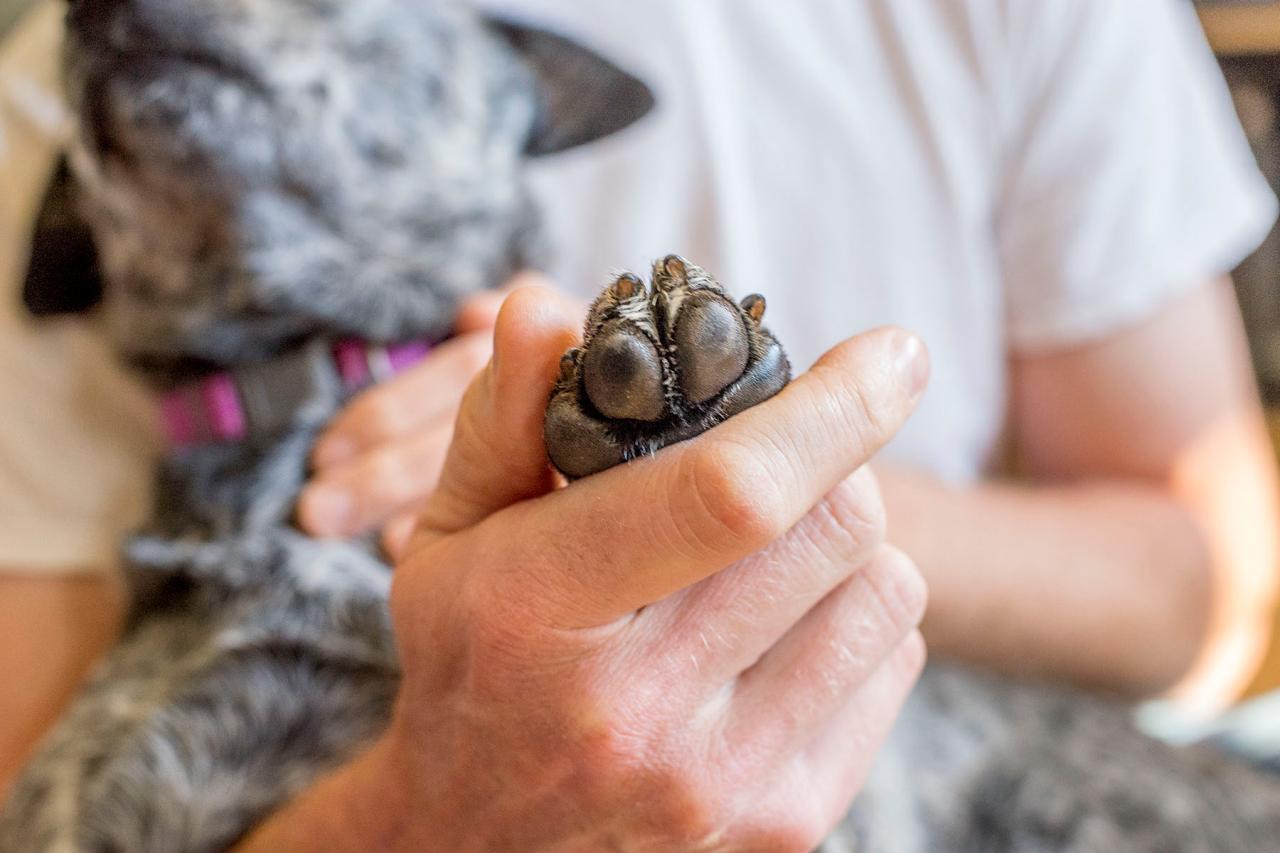Invest in a Warm Jacket
Probably the most important thing to do when preparing for the cold! Having a high-quality, warm jacket will allow your pup to continue exploring outdoors all winter long without getting too cold. Do your research ahead of time by determining what jacket features your dog will need to keep them most comfortable - Waterproof? Fleece lining? Sleeves or sleeveless? Ruffwear breaks down how to choose the right jacket for your dog and also has a wide range of dog jackets to choose from.

Toss an Extra Blanket or Two in Their Bed
No matter where you live, the temperature is going to drop and your dog may find themselves a little more chilly than normal at night. Toss an extra blanket on them before bed so that they can curl up and stay warm, even on the coldest nights.
Put Booties on Before Walks
It's no secret that icy roads and sidewalks can be tough on paws. And frostbite from walking through snow is no joke either! Dog booties can be a lifesaver and will protect your dog from snow, ice, and road salt (which can actually burn their paws if you're not careful!)
Avoid Salted Roads/Sidewalks
If your dog prefers not to wear winter booties, then you can still head out for winter walks, just be sure to look out for salted roads and sidewalks. When the salt mixes with snow, it can burn your dog's paws and cause a lot of pain. And if you have a puppy or especially curious dog who loves to look for treats on the ground, accidentally ingesting salt can also be very dangerous.

Don't Forget to Hydrate!
Even for us humans, it can be hard to remember to drink enough water in the colder months! Make sure your dog always has access to water at home and bring along an extra bottle of water them on longer walks/hikes.
Keep Up with Weekly Brushing
Nature gave dog's their own warm jacket that we call their "winter coat". In the fall, your dog loses their summer coat to make way for their thicker winter coat, so you're probably noticing a lot of shedding right about now. The amount of shedding varies by breed, but you can stay on top of it by consistently brushing them weekly (or daily for dogs with longer fur).
Time Your Walks Accordingly
Unlike the summer when the early morning and evening were the best times to go for walks, in the winter months, it's best to head out in the afternoon when the temperatures are the highest. You'll also want to check the weather ahead of time - take advantage of the sunny days and save the dark, rainy days for indoor activities.

Don't Leave Your Dog in the Car
A phrase often heard in the summer, but freezing temperatures can be just as dangerous! If you need to head out to the store, keep your pup at home where they can stay warm and catch up on some Z's before your next adventure.
Proper Paw Care
After long days of playing in the snow, your dogs paws may be in pretty rough shape. At night, apply a paw balm like this one to keep their paw pads soft and moisturized. You or your groomer may also want to pay extra attention to the fur around their toes if they have long hair. Ice and snow can get stuck to the fur and cause frostbite, so keeping the hair short will make walks and playtime much more comfortable.






